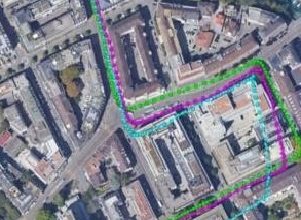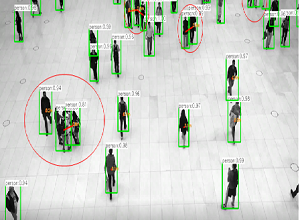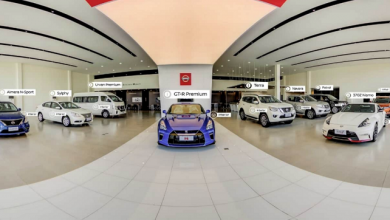Edge Computing in Modern-day Car

The automotive industry with connected vehicles is one of the fastest-growing industries for Edge Computing. The creation and distribution of advanced maps with real-time data, and advanced driving assistance using analytics of video streams are all examples of emerging services that require vehicles to be able to Compute Intensive. This will require networks that can facilitate the transfer of a large amount of data between vehicles and the cloud where compute happens, often with real-time characteristics. However, given the real-time & mission-critical needs of Automotive vehicles including tough latency, reliability & security requirements a distributed computing architecture including Edge & Cloud is needed for automotive. Also, many of the functionalities & features inside a Car are rapidly moving to Software & Cars are becoming a Compute Engine with features are being offered at a Software level rather than traditional all hardware-based features. Cars are also generating & consuming massive data and offering multiple data-based services to the riders (for example real time traffic monitoring, Vehicle tracking, online infotainment etc.) which is only possible with a distributed computing architecture and a superior connectivity which is becoming reality with 5G coming in.
In summary there are three key disruptions enabling a Car be more Software-driven & thereby having more local computing powered by Edge. They are: –
- Market Change: – Automated Driving, Connected Solutions, Reducing Vehicle Life Cycle & thereby having more Software based features to reduce cost & time to Markets quickly, Growth of Smart Cities & thereby increase use of Data (e.g. Smart. Traffic Management), Smart Fleet Management to reduce Operational Cost significantly.
- Shared Mobility: – With increasing competition between the shared mobility service providers, Ubers & Lyfts are offering new services to attract & retain their Customer base. This is forcing OEMs to add new features in Cars. For example, the purpose-built vehicles could feature lower levels of complexity; less powerful engines; simpler, easier-to-clean interiors; less complicated assembly processes; and lower distribution costs. Such a car could cost almost 25 percent less than a typical vehicle & will make shared mobility more affordable. Similarly, Autonomous Vehicles could be a real game-changer for service providers. Today, car sharing is rarely economically viable in cities with fewer than half a million inhabitants. Self-driving cars would enable mobility players to reposition vehicles optimally, allowing smaller fleets to provide adequate coverage and reducing the fixed cost base. Autonomy would also let companies target different user segments via smaller differentiated fleets of vehicles.
- Complexity Change: – Instead of Multiple ECUs merge them to Connected Products which are Automated & Holistic.
In 2013, 10% of Car Features were delivered by Software & by 2023 it is expected to go up by 40%. Hardware share is expected to come down to 40% from 85% in 2013. Sensor will go up from 5% in 2013 to 20% in 2023.
Let’s look at some of the use cases of Edge in the Modern-day Car: –
- Sensor fusion and value aggregation: – Modern Day Car will have hundreds of Sensors in the Car. The data generated by these sensors are locally processed, fused together to give a consolidated view in a Service Oriented Architecture & local decisions are taken inside the Car by Edge Computing. Some of the data needs to be sent to Cloud for further processing where Edge computing helps to limit the amount of data that is pushed out in a smart way. This reduces the data transmission costs and limits the amount of sensitive data leaving the vehicle.
- Next Generation ECU Architecture & Vehicle Networking: – In a traditional Car Architecture we have multiple independent ECUs (close to 100) which are interconnected through CAN Bus (5-6 Can Bus in a Car). However, in a modern-day car, ECUs will have strong interdependence on each other. Also, as vehicles have added more features — like infotainment, telematics and ADAS – the number of ECUs in each vehicle are increasing there by adding cost & complexity. To address this In a modern-day car ECUs will be replaced by High Performance Edge Computers (80-100 ECUs replaced with 4-5 HPC inside the Car with a Single CAN Bus per zone) fueled by Sensors. So instead
of100 ECUs have 4-5 HPC which act as Central ECU, Decouple & consolidate functions from Hundred ECUs to these Central ECUs, build service-oriented architecture rather than CAN Matrix & Central Gateway for secured external communications & integrate with Cloud for online services. - Autonomous/Semi-Autonomous Driving: – Algorithms will
berun in the High-Performance Computing Units inside the car. The decisions/insights will be taken inside the Car, but the data collected from various sensors will be uploaded to cloud at a later stage so as to train & fine tune the algorithms at the Cloud & later deploy at the edge inside the Car. For example, angle of turn taken by the Car could be analyzed at the Cloud with corresponding GPS data, train the algorithm to improve accuracy of turn & then deploy the retrained algorithm in the edge inside the car. - Next Generation Intuitive Infotainment System: – To learn what functions and applications users are really using and where the interaction design should be optimized — whether it is the touch or voice interface — machine learning algorithms are an important tool to find relevant insights into the vast amount of available data. Edge computing helps to bring machine learning models, which were trained in the cloud, easily to the device. The local available behavioral and sensor data can be used for predictions to improve user interaction.
- Predictive & Prescriptive Maintenance of Critical Components: – Let’s take the example of Battery which is a very Critical Component of any Car. Battery maintenance and charging depend on dynamic situations after the car is actually shipped out: like tire pressure, acceleration, traffic, charge cycles, driver habits, etc. Edge Computing will aggregate these data, build the appropriate ML Model & can-do a near real time evaluation of the state of the battery & take/instruct to take appropriate actions. Same is true for other critical components like Tire, Engine, etc. This will increase the durability of parts & safety of the Vehicle.
- Value Added Services: – Automated Parking, Smart Home & Vehicle Interactions, Critical Software Updates, Smart Citi Integrations like Smart Intersections etc.
In Summary, Modern Day Car is a very Powerful Software Platform driven on wheels. Like any other Software Platform, it has its own challenges like Software Integration from multiple entities (OEM, Tier 1, 3rd Party), Mission Critical Performance & Reliability, Security at both Software & Sensor End, Complexity of Software Updates – Criticality, Version Control, Rollback etc. It brings in several benefits to Manufacturers – new features are much easier to roll out, Cost of Manufacturing reduces & various paid services are rolled out which provides an additional revenue stream. For riders. Cost of Operation goes down, gains substantial Productivity – Edge aids to take intelligent decisions & great User Experience in Driving & Riding the Car. Very soon Car will be nothing but a big fat Edge Computer. We will need more & more Computer Science Engineers to build & manage the next generation Cars.
Author:
Supriyo Das, Vice President – Industrial & Engineering Services, Wipro Limited
Published in Telematics Wire





